1962-1964 MAX WEDGE OIL PAN
Max Wedge engines had an oil pan that was exclusive to these engines alone, part #2402307. I have found other part numbers for the same pan between the '62-'64 run of this pan but have yet to figure out why. They are all virtually identical in every way right down to the spot welds of the baffles. The Chrysler parts books only show one oil pan part number throughout Max Wedge production. If anyone out there knows about these different part numbers or has a pan different than this I would like to see pictures of it. Max Wedge oil pans held six quarts of oil instead of four quarts like standard production engines. This is what a Max Wedge oil pan looks like ....
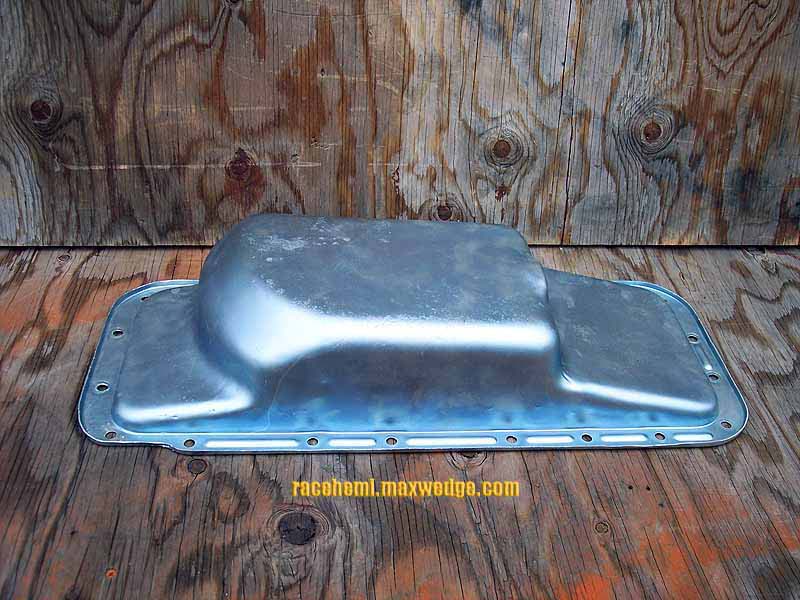


This pan has two baffles, one front and one rear as opposed to the single front baffle on regular oil pans.
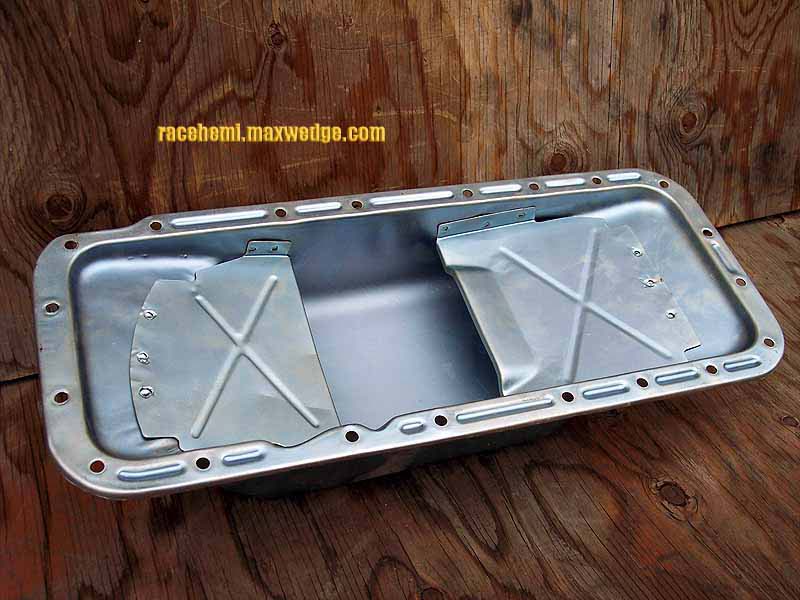
To go with this special oil pan the engineers designed a special swinging oil pickup to deal with oil transfer to the back of the sump under hard throttle and the front of the sump upon abrupt deceleration.
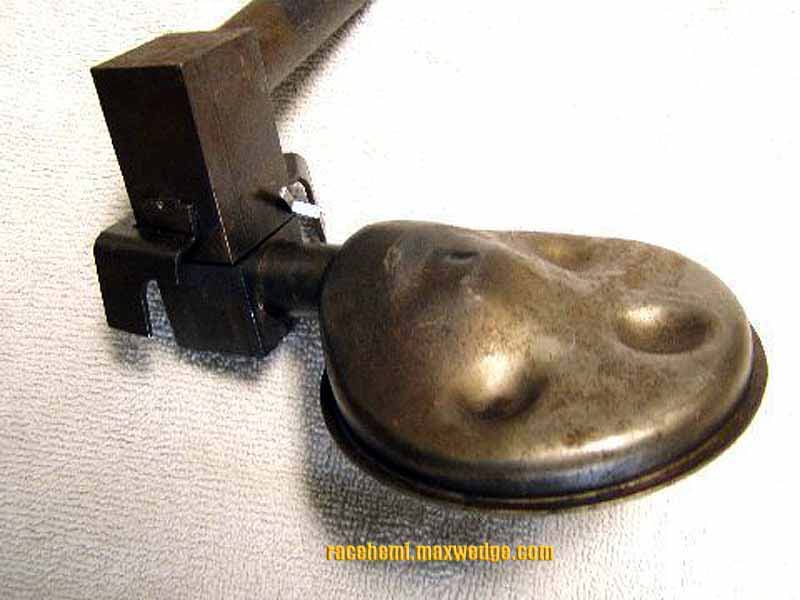
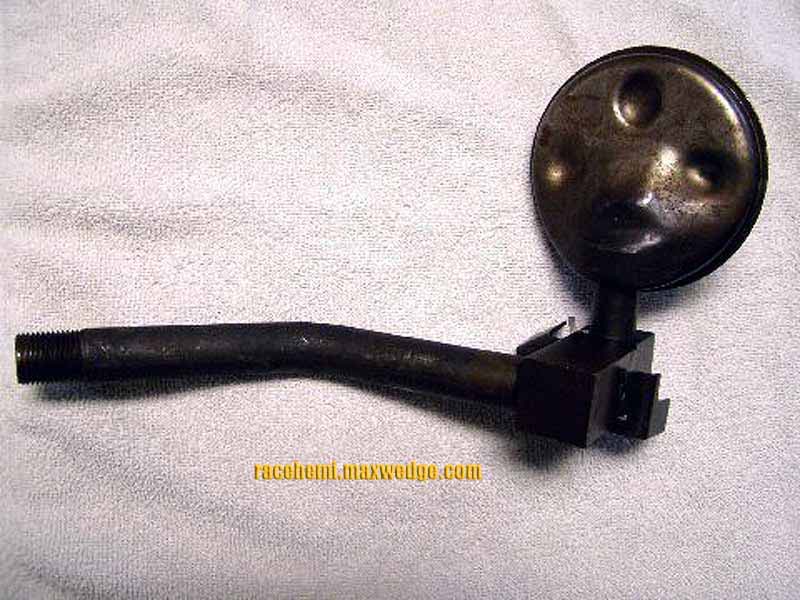
For 1962 this swinging pickup for the Max Wedge engine used the existing 3/8 inch pickup pipe size like standard engines used. In 1963 and 1964 the newer bigger 426 Max Wedge engine was upgraded with a larger 1/2 inch pipe swinging oil pickup that looked identical to the 3/8 inch swinging pickup.
I should mention at this point that there is a factory bulletin, P-5161-C, # D64-16, dated 12/11/1963 regarding Max Wedge engines and swinging pickups. The bulletin states the issuing of a new "solid", non-swinging oil pickup, part # 2465749 replacing the swivel screen pickup used on the '62-'63 Max Wedge engines. I have never seen a non-swinging pickup in a production engine nor has anyone else asked about this. It's hard to tell if this change made it into factory built cars.
It is interesting though that my original blueprints for the '64 Race Hemi shows a "solid" pickup that looks very much like the 3/8 inch pickup used in the '62-'65 383 and 426 Street Wedge engines, only it's 1/2 inch in diameter.
Mopar Performance came out with a pickup a few years ago, part #P5249817 listed as a 1/2 inch diameter tube for "B" engine. Funny thing is it is identical to the '62-'65 383 and 426 pickup. It is about 3/8 to a 1/2 inch longer which looks like it might be a prefect fit for the Max Wedge oil pan and looks identical in shape and length to the pickup in my Race Hemi blueprints. Here is a picture of the 817 pickup as it sits in a Max Wedge oil pan...

It is important to mention here that because this pickup sits deeper into the Max Wedge pan, it sits too low to fit into a standard production '62-'65 B-body oil pan. You can use this 1/2 inch pickup, however with a standard pan it will require a minimum of two gaskets and a windage tray. The windage tray will require some trimming, though, to clear the pickup, and even then it will be sitting on the bottom of the pan. I am mentioning this because some of you might think about modifying a '62-'63 pan to make it look like a Max Wedge pan. You can in fact do that with a skilled enough welding artist, but that pan will be too shallow to use the 817 pickup by itself.
On this 3/8 diameter tube versus 1/2 inch diameter tube thing, you need to be mindful of this while you round up your block. 2406730 castings that were originally Street Wedges will have the 3/8 inch oil pickup and will require the block be resized to 1/2 inch for the larger pickup when building a correct Max Wedge engine. A person can stick with a 3/8 pickup but one can only assume the engineers increased the pickup sizing to 1/2 inch for improved oil volume delivery to keep Max Wedge engines alive under hard throttle runs. Another thing to consider if you stay with the 3/8 pickup, the '62 swinging pickup that was 3/8 inch had problems that were noted regarding oil starvation due to seal compromise at the swing joint of the pick up tube. When this compromise occurred the oil pump would start sucking air at the seal which was usually above the oil level in the pan. I don't know that the 1/2 inch swinging pickup didn't have the same problem so if you are using an original used swinging pickup you might want to have that seal checked before using the swinging pickup on your high dollar engine.
If you decide to go to the 1/2 inch oil pickup be advised when you enlarge the threaded hole in the block for the bigger oil pickup you will end up with a thinner wall in the casting around this new hole. You must be careful not to over tighten your new 1/2 inch pickup in the block. Sometimes when over tightening you can cause a crack in the thinner wall which will result in the oil pump sucking air instead of oil. In some cases on some blocks the oil pickup threaded hole is too close to the thinner side of the wall around this hole. Enlarging the hole size will almost guarantee the possibility of a crack when going to 1/2 hole size. In these cases you should have your machine shop offset drill the larger hole towards the thicker part of the block.
There are a few talented welding guys around that are making replacement Max Wedge oil pans but they are not cheap. This kind of modification work is very time consuming so look to pay in the $1,200.00+ range for a good modified pan. Years ago some friends and I decided to find someone locally that could do this kind of work. We found a talented guy but the pans cost us over $500.00 each and they leaked at the welds. After all of that hassle we ran into the shallow depth issue. Conclusion ... Pay the guys that have done this professionally and save yourself from a world of hassles.
If you do find an original Max Wedge oil pan, expect to pay $1,800.00 to $2,500.00 for a beat up pan that is restorable and closer to $3,000.00+ for a real nice pan. If at first you don't see a decent pan for a good price, consider buying anything you can find just to get one, then look for a better one now that you can afford to be picky. Once you have a good pan sell your lesser pan to offset your costs.
1964-1965 RACE HEMI OIL PAN
Race Hemi oil pans looked more like a regular big block B-body oil pan in use during 1964 and 1965 however they were indeed different. Basically they were deeper for more oil capacity and had two baffles similar to the Max Wedge baffling. Here are a few pictures of a Race Hemi oil pan...
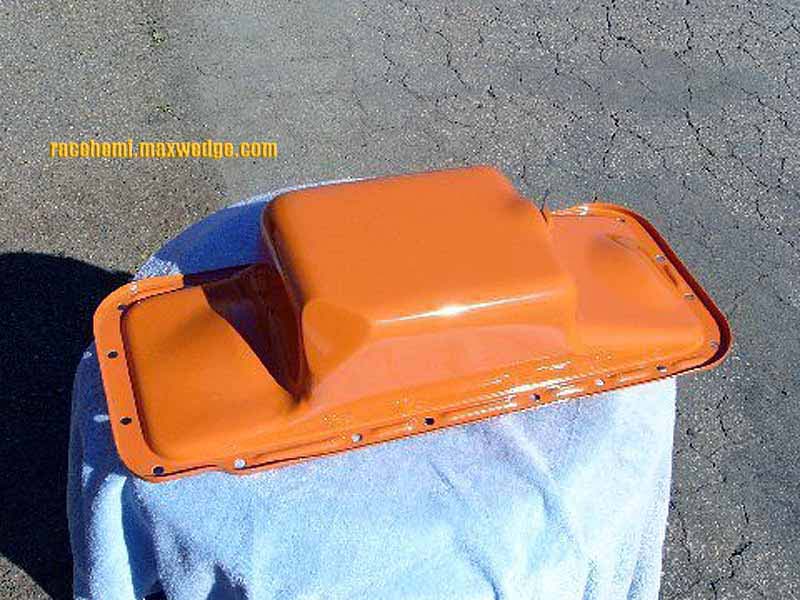
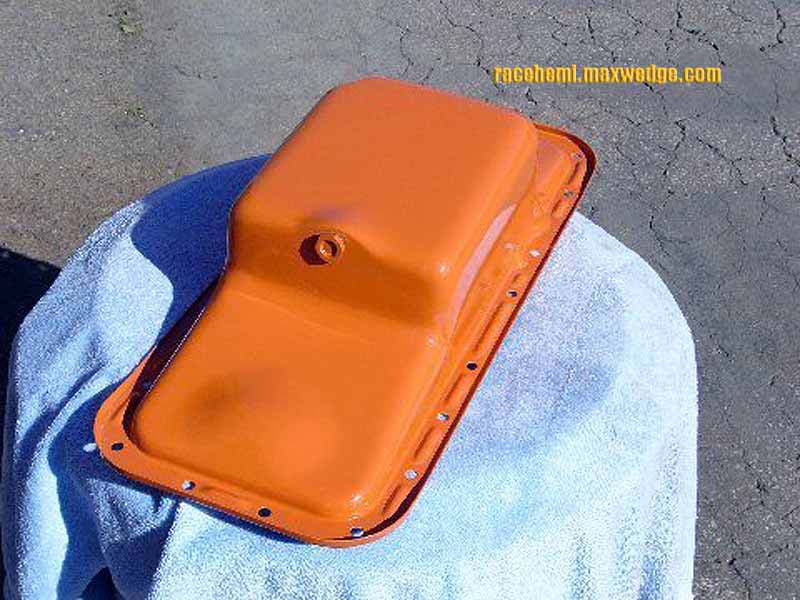
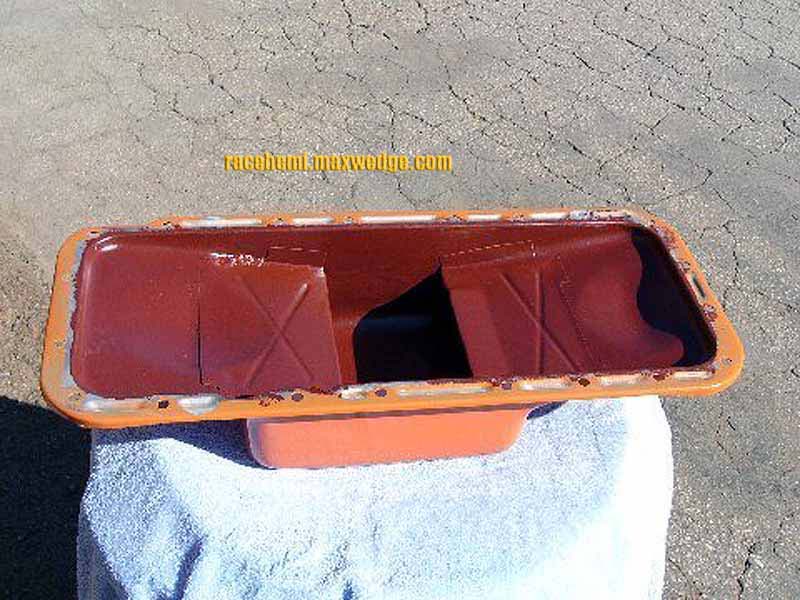
As I mentioned earlier, the Race Hemi blueprints I have show a pick up tube just like the one you see in the Max Wedge pan picture above, however if you are planning on using the 817 pickup I described above I am not certain if the depth of the pickup will be correct. That can be easily fixed however.
Here are a couple pictures of a '64-'65 big block B-body oil pan. Aside of the bulges in the front flat and rear sloping areas this pan is identical to a '62-'63 big block B body oil pan without bulges.
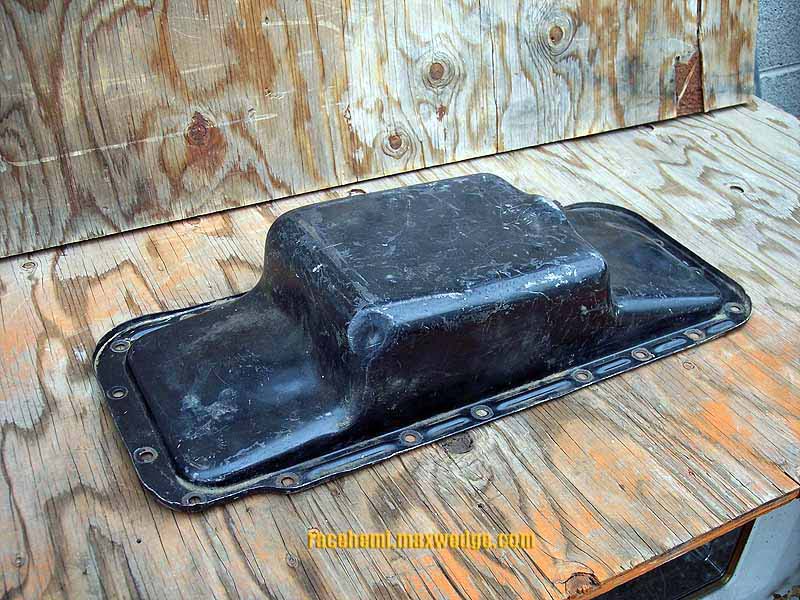
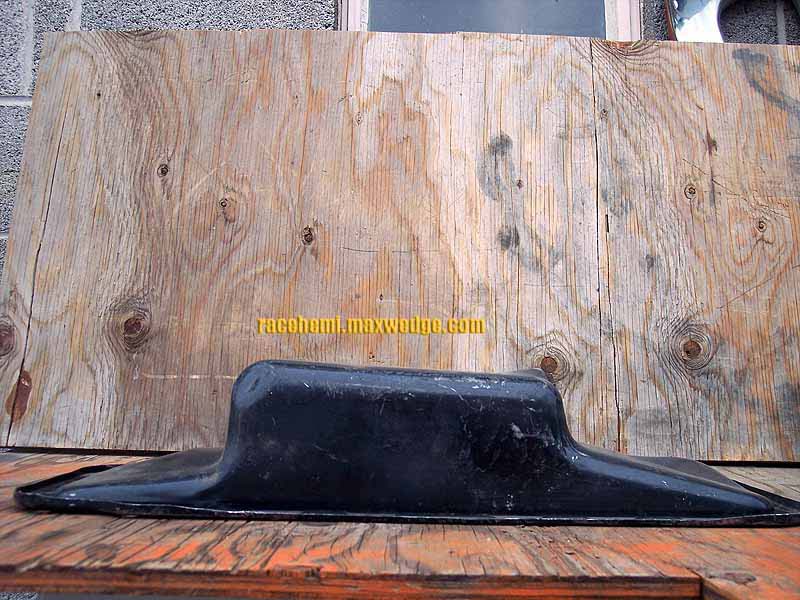
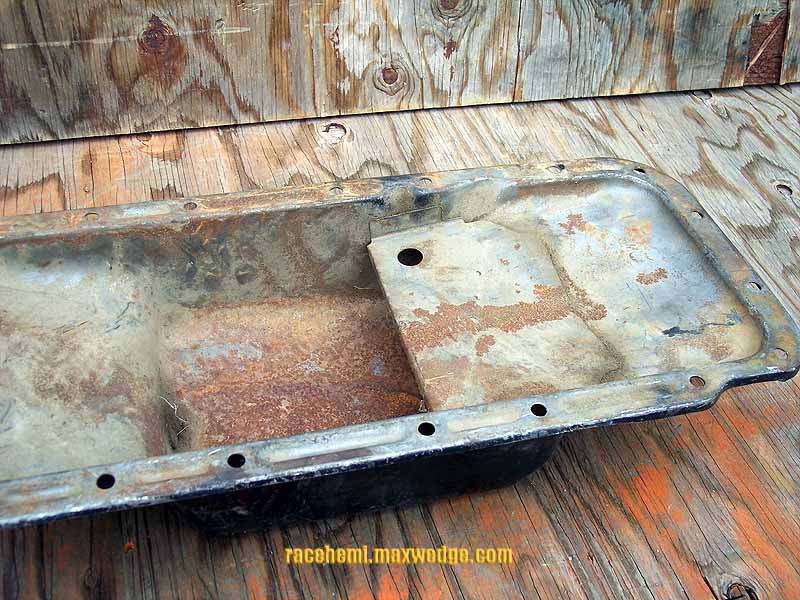
Now you know what I know.
Note: The service bulletin regarding the Max Wedge non swinging oil pickup was provided by Bob Chavez, a noted Max Wedge authority.